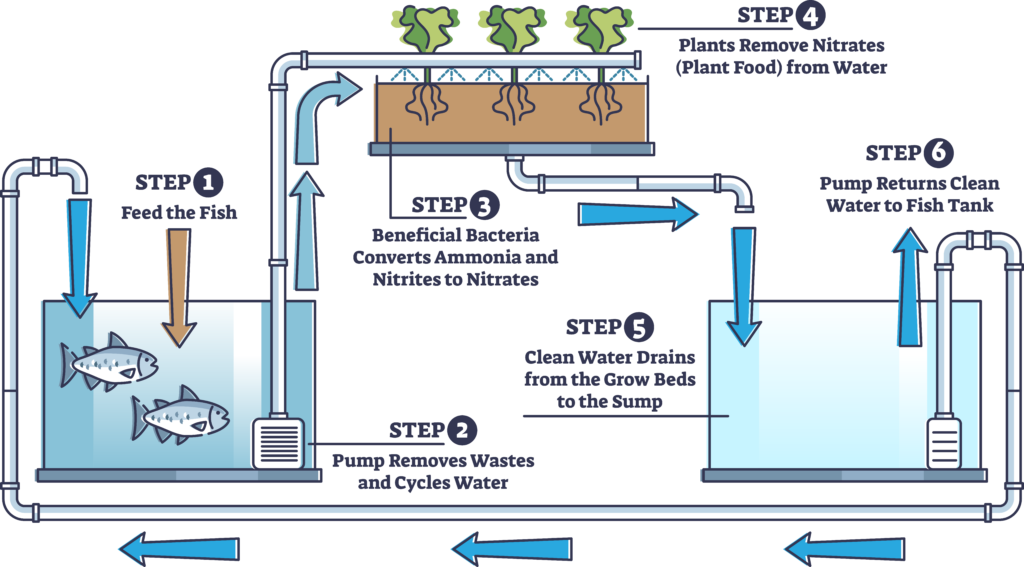
Technology & Components
Aquaponics is the symbiotic relationship of a food production system that combines aquaculture (raising aquatic animals such as snails, fish, crayfish or prawns in tanks) with hydroponics (cultivating plants in water).
In an aquaponic system, water is fed through bio filters where the by-products are broken down into nitrites and nitrates, and then to a hydroponic system where the plants absorb the nutrients. The water is then recirculated back to the fish tanks where it repeats the process of generating beneficial nutrients.
The vegetables, fruits and the fish continue to grow in the process, enabling a harvest of both freshly grown produce and fish. Also, because of weather conditions in various parts of the world, greenhouse-like operations are essential if a year-round food supply is to be sustainable.
An aquaponics system generally uses 90% less water than traditional agriculture, and reduces growing times up to 30% while producing 2-3 times the yield of traditional farming. More than 200 varieties of plants, fruits, and flowers can be grown aquaponically. Also, because fish are cold-blooded, they consume less energy while feeding, and instead transfer that energy into growing body mass at a rapid rate.
TAG’s strategy is to develop, build, and support aquaponic systems for orphanages and schools. Staff personnel attend TAG training programs to learn the installation and operation of the aquaponic systems. The trainees will then become the mechanism through which TAG will receive on-going feedback once the installation has been completed. TAG will monitor and return to each location as needed to ensure future development and expansion of the technology.
Another crucial component to TAG’s development was the construction of our Research and Training Center at Christ’s Haven Children’s Home in North Texas. This greenhouse facility is vital to the overall success because it enables us the ability to replicate the conditions and resources we have to work with in a particular country or region here in Texas. This is critical to the success of the design and types of systems to be installed in various parts of the world.
